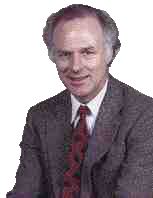 The prevalence of caries has significantly decreased in North American born children. For some groups of young children, however, it remains distressingly high. Early childhood caries, more familiarly referred to as baby bottle decay, is a form of rampant decay affecting children aged from I to 3 years. Although early childhood caries has been shown to represent a significant health problem in Canadian First Nations Populations it is by no means confined to them. If the right conditions exist early childhood caries can affect any child regardless of race or socio-economic status. The all night bottle containing milk, juice, or other sugar containing liquids is the known causative factor. Once the bottle becomes a nightly habit for the infant it is a habit which is very hard to break.
The prevalence of caries has significantly decreased in North American born children. For some groups of young children, however, it remains distressingly high. Early childhood caries, more familiarly referred to as baby bottle decay, is a form of rampant decay affecting children aged from I to 3 years. Although early childhood caries has been shown to represent a significant health problem in Canadian First Nations Populations it is by no means confined to them. If the right conditions exist early childhood caries can affect any child regardless of race or socio-economic status. The all night bottle containing milk, juice, or other sugar containing liquids is the known causative factor. Once the bottle becomes a nightly habit for the infant it is a habit which is very hard to break.
Modern parents lead very busy lives. Often out of economic necessity both of them work, their children are in day care, and by the time they all get home in the evening they are tired and need a good night’s sleep to tackle the next work day. As a result the all night bottle becomes a useful sedative which helps to ensure a peaceful night. In our practice we are not seeing a decrease in cases of early childhood caries and it is unfortunate that many of the parents of affected children are well aware that the all-night bottle they have been giving the infant is the causative factor. The treatment of early childhood caries, if it is not recognized in its early stages, is both extensive and extremely costly. Stainless steel and strip crowns plus pulpotomy and pulpectomy procedures are usually the treatments of choice. The children are often very young and uncooperative so that many have to be treated under general anesthesia. In advanced cases extraction of affected teeth may be the only treatment option. In addition the pain and discomfort that accompanies early childhood caries has social and nutritional implications.
The tragedy in all of this is that early childhood caries is entirely preventable and it is incumbent upon all health care professionals to contribute to its prevention. In addition to dental professionals these also include family physicians, paediatricians, obstetricians, pre- and post-natal personnel, and public health nurses, because they all have a significant role to play. It is no longer acceptable for parents to be advised that the age of 3 is the right age for infants to first see the dentist. Just as family physicians and paediatricians perform well baby check-ups so should dentists encourage parents to bring their infants for ‘well tooth’ check-ups.
As soon as the first teeth start to erupt parents should be encouraged to take the infants for their first dental visit. At this visit it is quite possible to perform a comprehensive dental examination but, more importantly, the parent can be questioned on their infants feeding habits and advice can be given should modifications be required. During these visits early signs of early childhood caries such as decalcification at the necks and lingual surfaces of the maxillary incisor teeth can also be detected and appropriate preventive measures instituted. Simple oral hygiene measures that can be performed at home and improved nutritional habits can have a significant effect on the advancement of the carious process. Brochures and informational handouts should also be provided for parents and care givers. Children considered to be at risk for early childhood caries should be seen on a regular recall basis for early intervention if the disease process progresses and for reinforcement of preventive measures.
The cause of early childhood caries is known. It is an entirely preventable disease and the early involvement of dentists in the dental care of infants cannot be over emphasized. As a profession we are continually improving and changing the way we practice and infant dental care must be a part of this.









